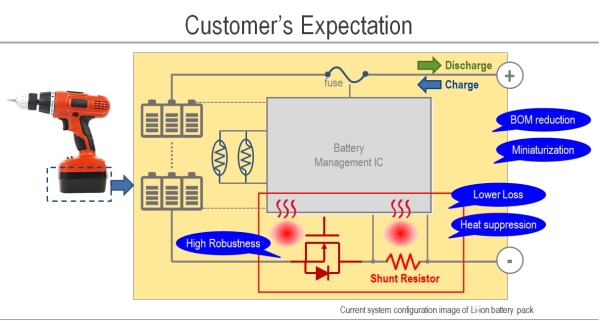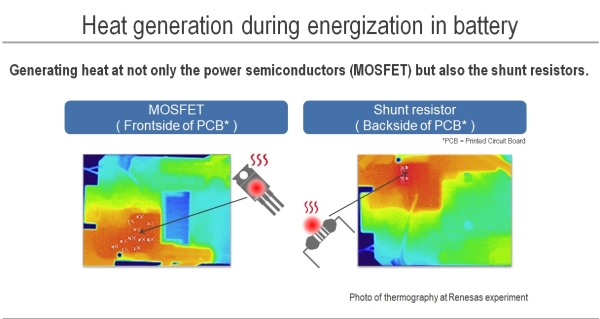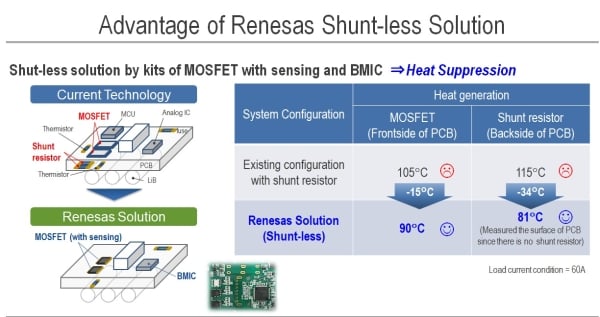Hello everyone, hope you and your family would keep healthy. This is Ojima, I’m responsible for marketing and customer support for automotive and industrial power device products.
We have, in the past blog, introduced Renesas power devices in series. The last time was the introduction of automotive power MOSFET products for mild hybrid vehicles (please refer to the link). This time, let me introduce the features of the solution for Li-ion batteries using our industrial power MOSFET.
Due to the influence of COVID-19 from the end of 2019, new lifestyles such as being at home have been spread. As a result, the trend of DIY (Do It Yourself) has also been increasing, and the demand for power tools and lawn mowers is increasing. Until now, it was rather an image of a work tool (= professional use), but recently these products became to be seen on the sales floor of the Home Depot to target private use.
In the past, AC type (power supply with cord) products were mainstream, but the DC type (powered by Li-ion battery) products have been increasing since there is no limit in the working range and the workability is good. In this circuit, the power semiconductor does very important work. In fact, an Li-ion battery is equipped with a protection circuit to secure the safety if an abnormality occurred, and the power semiconductors are active there. So, what do customers who plan and manufacture these products expect and have trouble with?
Customer’s Expectations: “Hard to break” & “Heat suppression
- High Robustness: Since it is a key device that shuts off the power line when an abnormality (e.g., overcurrent) occurs in the battery, power devices are required to be hard to break.
- Heat suppression: Since the loss of the power line in the battery generates heat when a large current flows, the safety of the Li-ion battery is threatened. It is important for an Li-ion battery to reduce this loss. So, power devices used for shut-off is also required lower loss (= lower on-resistance).
- BOM Reduction: BOM reduction is required while ensuring the same safety level as existing products.
Is there anything that Renesas power devices can support these customers’ expectations and challenges?
Renesas’ Thinking: Solving Issues including not only Power Semiconductors but also peripheral components
Towards the market request of “High Robustness” and “Lower Loss” in the automotive and industrial field, the Renesas power MOSFET lineup is prepared. Our product value is admitted by customers, and as a result, our device is applied by W/W. If you have an interest, please refer to the link (automotive to the Link, industrial to the Link). The development of next-generation products focuses on improving performance (= Lower on-resistance), but this performance improvement will also go to limit someday.
So, we focused the resistor for current detection (=Shunt resistor) which is also inserted on the power line in the Li-ion battery. This shunt resistor generates as much heat as a power semiconductor when the current flows. In order to reduce this heat generation in the shunt resistor, the resistance value must be reduced, but there are side effects. The lower resistance value reduces the signal level from the shunt resistor, and it is necessary to review the circuits and products configuration for the signal detection (in the worst case, cost up). To reduce the resistance value of this shunt resistor also has the limitation that the resistance value cannot be “Zero”. Therefore, it is a fact that the performance improvement at system level depends on the Power semiconductor.
To breakthrough this trade-off issue, “Shunt-less solution” is under development that this solution can be realized by the Power MOSFET with current detecting function in combination with BMIC (Battery Management IC: please refer to the Link, RAJ240100GFP is used in this case). It is possible to reduce the “shunt resistor”, which is one of the factors of heat generation, and the temperature can be greatly reduced. Furthermore, it can be reduced by about 6% compared to BOM of MOSFETs and shunt resistors. We believe that this will further contribute to the safety of Li-ion battery or expand the range of applications that can be applied, such as enabling the same heat generation to support higher output.
Thank you so much for seeing this blog. Apart from this, “Winning Combination” introduces a total solution that combines product under mass production. (Please refer to Automotive to the Link, Industrial to the Link). Please feel free to contact us if you are interested in our power device.
And, this series blog will be continued. See you next time!



